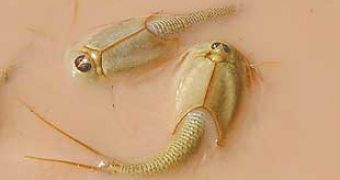Spring in the temperate areas is the time when a cycle interrupted by the winter is restarted.
Many people are worried by the fact that the extremely warm winters - due to the current man made global warming - could make trees bloom in January or February. But this is not going to happen, as plants and most animals respect an inner calendar. That means that not only light and temperature count, but also the running of a certain time period.
During millions of cycles, warmer times could have occurred in many times, but if the plants and animals get back to active life too early, they risk not to stand a sudden frost or other types of bad time.
A freshly bloomed tree is easily destroyed by a late frost. That inner calendar could be determined by the accumulation of some chemicals inside the body, because even in the winter, the organisms do have a low metabolism (complete zero would mean death).
The accumulated chemicals reach a threshold, the organism could be warned that they have to wake up.
When bears go out of their den, hungry and in a very bad mood, in many situations they look for laxative plants or mineral springs with water possessing the same effects. That's because during the fall, before retreating to their den, bears have to turn off their gut, as they pass the winter relying on their fat reserves. For this purpose, they eat first laxative herbs to empty their gut and after that they chew coniferous resin-rich bark, which forms a plug that occludes its rectus.
So, in the spring they have to remove the plug. Remember that bears, skunks or badgers do not hibernate, they just pass the winter in a sleepiness and can be easily woken up.
But other mammals, like mice, dormice, bats or hedgehogs are real hibernators. Their body temperature drops, and so do their heart beat and breath. They can not wake up easily and the environment temperature must remain for a longer time over 18-20 degree C. A hamster needs two hours to raise its body temperature from 6 to 37 degrees C, first the head and after that the posterior part of the body.
If the weather turns bad after the waking from hibernation, bats enter again in the hibernating stage, and this can occur several times during the spring.
But spring does not mean only rising temperatures, but also rainfall.
Some habitats exist only in spring, as they dry in summer, and in the desert spring can literally mean an explosion of life. For example, temporary slops resulting from melting snow or spring rainfall are not just breeding slops for some toads, but also the habitat for small phyllopod ("fibrous feet") crustaceans.
With their carapaces, these crustaceans look like minute trilobites.
Phyllopods live only in these waters during the spring and interestingly enough, not all the eggs (which can have passed many years in a dried stage) hatch: as the slop is emlarging, due to abundant rainfall or melting, new larvae hatch from the existing eggs.
This way, an eggs reserve is maintained for the case when the slop dries too early and the adults die without producing new eggs, an amazing adaptation for the variable conditions of the spring.
In the deserts of the southwestern US, the phyllopods can emerge few times during a century as the eggs of the different species can resist up to 25 years in the salty dry soil at summer temperatures of over 40 degrees C. Some creatures, like the spadefoot toads from the same deserts live just in spring, as in the rest of the year is too dry for them.
During the drought time, their use their "spades" (horny spurs) to dig into the ground, where they retreat in a chamber lined with a mucus produced by the toads, making an isolator layer that impedes water losses.
The toads remain in their "cocoons" for 8-9 months till another spring fall wake them. Then they hurry up to mate: in 1-2 days after hatching the tadpoles experience the metamorphosis and in a month they are mature individuals.

 14 DAY TRIAL //
14 DAY TRIAL //